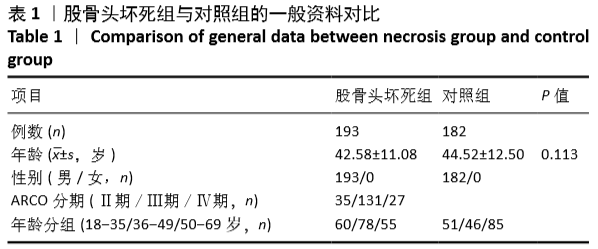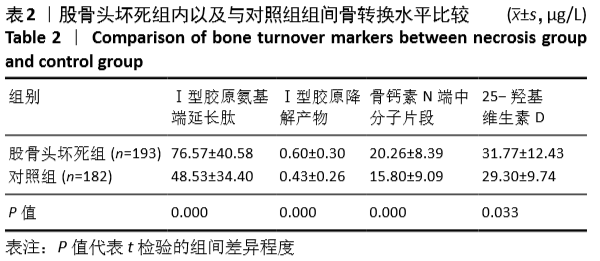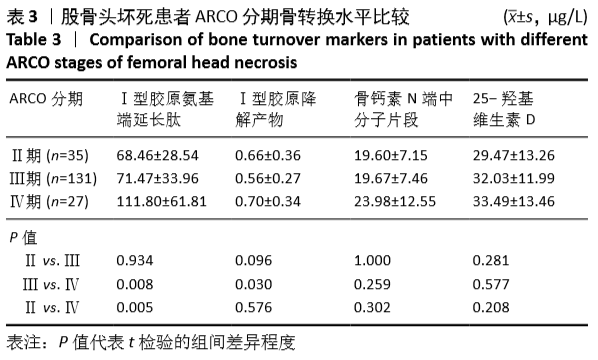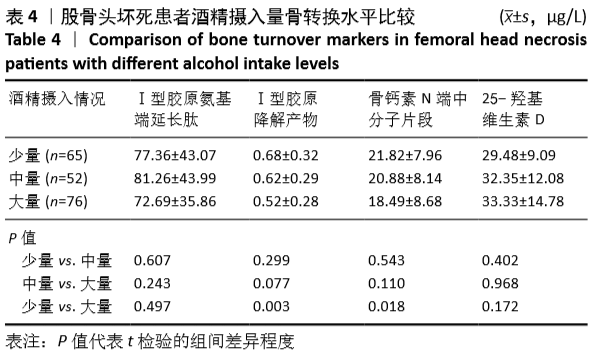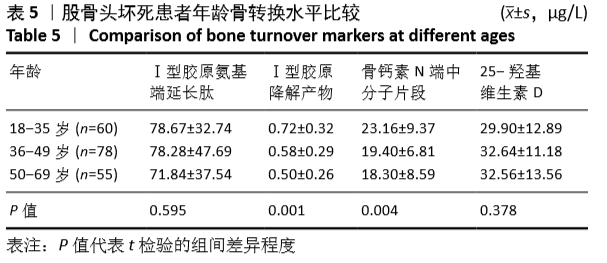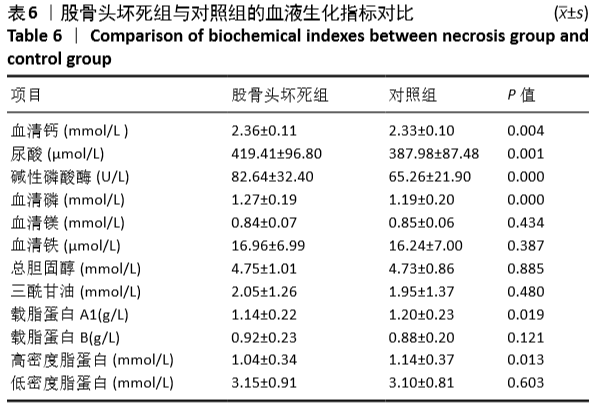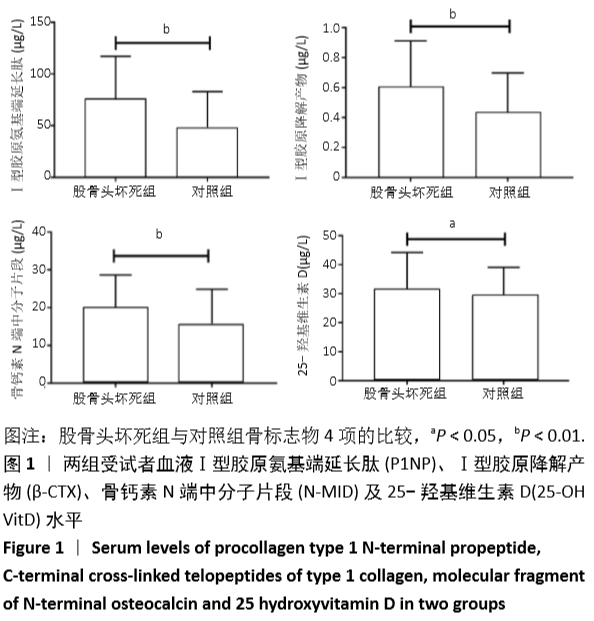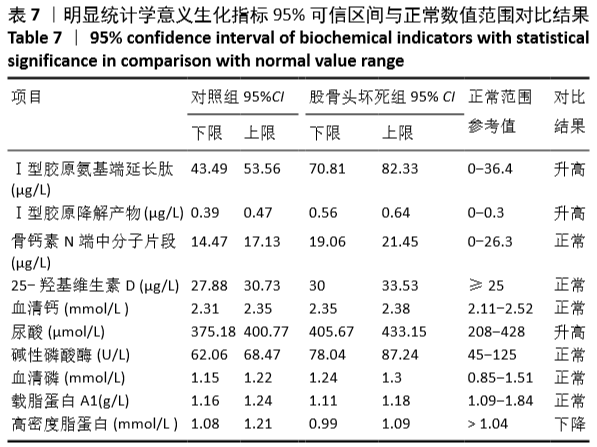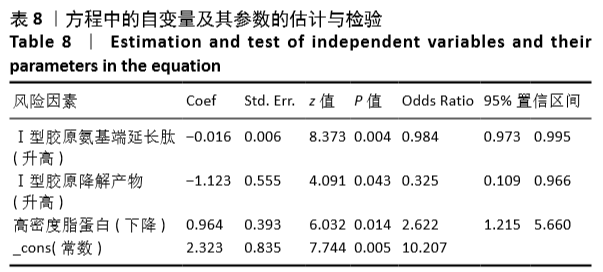中国组织工程研究 ›› 2021, Vol. 25 ›› Issue (5): 657-661.doi: 10.3969/j.issn.2095-4344.2994
• 骨组织构建 bone tissue construction • 下一篇
酒精性股骨头坏死患者的骨转换特点
郑小龙1,何晓铭1,龚水帝1,庞凤祥1,杨 帆1,何 伟2,刘少军3,4,魏秋实2,5
- 1广州中医药大学第一临床医学院,广东省广州市 510405;2广州中医药大学第三附属医院关节科,广东省广州市 510378;3广州中医药大学第一附属医院三骨科,广东省广州市 510405;4广州中医药大学髋关节研究中心,广东省广州市 510405;5 广州中医药大学骨伤科研究所,广东省广州市 510378
Bone turnover characteristics in patients with alcohol-induced osteonecrosis of the femoral head
Zheng Xiaolong1, He Xiaoming1, Gong Shuidi1, Pang Fengxiang1, Yang Fan1, He Wei2, Liu Shaojun3, 4, Wei Qiushi2, 5
1First Clinical School of Medicine, Guangzhou University of Chinese Medicine, Guangdong Province, China;2Department of Arthritis, the Third Affiliated Hospital of Guangzhou University of Chinese Medicine;3Department of Orthopedics, First Affiliated Hospital of Guangzhou University of Chinese Medicine,Guangdong Province, China;4Hip Research Center, Guangzhou University of Chinese Medicine;5Institute of Orthopedics, Guangzhou University of Chinese Medicine, Guangdong Province, China
摘要:
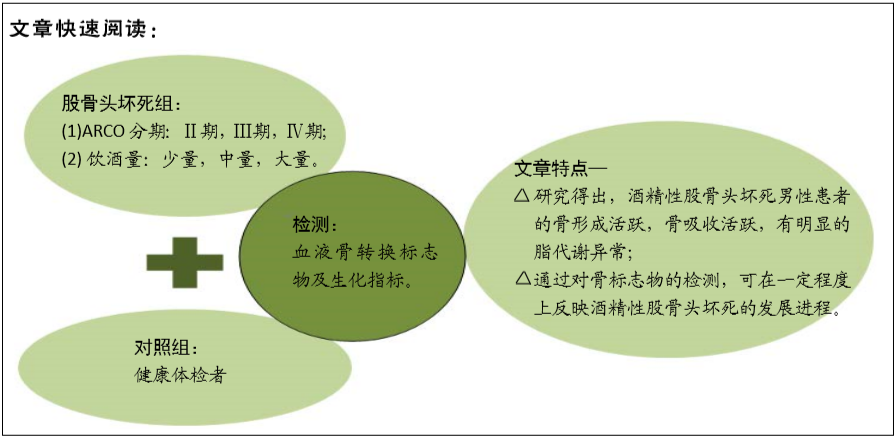
文题释义:
酒精性股骨头坏死:股骨头缺血性坏死是由于多种原因导致的股骨头局部血运不良,从而引起骨细胞进一步缺血、坏死、骨小梁断裂、股骨头塌陷的一种病变。酒精性股骨头坏死就是因为大量酗酒而引起的一种股骨头坏死。
骨代谢:骨的细胞在不停地进行着细胞代谢,不仅骨的细胞之间会相互作用,还存在骨髓中的红细胞生成细胞、基质细胞相互作用,以进行骨的改建和重建。在每一个基本多细胞单位,骨可因破骨细胞的吸收而消失,也能被重新合成骨的成骨细胞所取代。
背景:酒精性股骨头坏死的病理学变化是由多种因素综合作用的结果,其具体的发病机制尚无定论。相关研究表明股骨头缺血性坏死患者的骨代谢存在异常。
目的:探讨酒精性股骨头坏死患者的骨转换特点,探究股骨头坏死不同分期与骨代谢的关系。
方法:酒精性股骨头坏死男性患者(股骨头坏死组)193例,其中ARCO分期为Ⅱ期的有35例,Ⅲ期131例,Ⅳ期27例;其中少量饮酒65例,中量饮酒52例,大量饮酒76例。收集健康体检者中无饮酒史者男性182例为对照组。检测两组受试者血液骨转换标志物(Ⅰ型胶原氨基端延长肽、Ⅰ型胶原降解产物、骨钙素N端中分子片段、25-羟基维生素D)及生化指标,并进行逻辑回归分析和相关性分析。研究方案的实施符合广州中医药大学第一附属医院的相关伦理要求。参与试验的受试者对试验过程完全知情同意。
结果与结论:①股骨头坏死组的Ⅰ型胶原氨基端延长肽、Ⅰ型胶原降解产物、骨钙素N端中分子片段、血清钙、尿酸、碱性磷酸酶、血清磷水平均显著高于对照组(P < 0.05),股骨头坏死组的载脂蛋白A1、高密度脂蛋白水平均显著低于对照组(P < 0.05);②大量饮酒患者Ⅰ型胶原降解产物、骨钙素N端中分子片段显著低于少量饮酒者(P < 0.05);③ARCO分期Ⅳ期患者Ⅰ型胶原氨基端延长肽显著高于Ⅱ期、Ⅲ期者(P < 0.05),Ⅰ型胶原降解产物显著高于Ⅲ期者(P < 0.05);④相关性分析结果表明,酒精摄入量与Ⅰ型胶原降解产物呈负相关,碱性磷酸酶与Ⅰ型胶原氨基端延长肽、Ⅰ型胶原降解产物呈正相关,25-羟基维生素D与低密度脂蛋白呈负相关;逻辑回归分析结果显示,Ⅰ型胶原氨基端延长肽OR=0.984,P=0.004;Ⅰ型胶原降解产物 OR=0.325,P=0.043;高密度脂蛋白OR=2.622,P=0.014;⑤结果表明,酒精性股骨头坏死男性患者的骨形成活跃,骨吸收活跃,有明显的脂代谢异常。通过对骨标志物4项的检测,可在一定程度上反映酒精性股骨头坏死的发展进程。
https://orcid.org/0000-0002-1229-219X (郑小龙)
中国组织工程研究杂志出版内容重点:组织构建;骨细胞;软骨细胞;细胞培养;成纤维细胞;血管内皮细胞;骨质疏松;组织工程
中图分类号:
